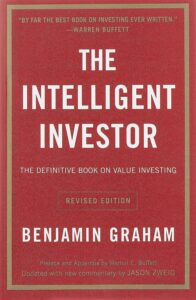Introduction
Mergers, acquisitions, and other restructuring activities have become increasingly common in the business world. These complex processes involve the combining of two or more companies through various means, such as mergers, acquisitions, joint ventures, and divestitures. These activities are often utilized as a strategic tool to gain competitive advantage, achieve growth, and increase shareholder value.
In this blog post, we will be exploring the topic of mergers, acquisitions, and other restructuring activities through the lens of author Donald M. DePamphilis. DePamphilis is a professor of finance and was also the founding director of the Students Investment Fund at the College of Business Administration at Loyola Marymount University. He has written several books on the subject, including Mergers, Acquisitions, and Other Restructuring Activities which has become a widely used textbook in the field.
Background
DePamphilis’ interest in the area of mergers, acquisitions and other restructuring activities stems from his years of experience as an investment banker and financial consultant. He has also served as an expert witness in several high-profile cases involving mergers and acquisitions.
His book, Mergers, Acquisitions, and Other Restructuring Activities, now in its fifth edition, provides a comprehensive and up-to-date analysis of the subject matter. It covers all aspects of mergers, acquisitions and other restructuring activities, including the motivations behind these activities, their impact on the companies involved, and the various financial strategies and techniques used to execute them.
Key Concepts
In his book, DePamphilis covers a range of topics, from the history and definition of mergers, acquisitions, and other restructuring activities, to the current trends and issues in the field. Some key concepts that are covered in depth include the role of investment bankers and financial advisors in these activities, the methods and strategies used to value companies, the legal and regulatory framework surrounding these activities, and the various forms of financing that can be used.
One of the unique aspects of DePamphilis’ book is its focus on the human aspect of these activities. He discusses the importance of understanding the behavioral and cultural differences between companies during a merger or acquisition, and how these can impact the success of the transaction. This approach is especially relevant in today’s global business landscape, where cross-border mergers and acquisitions are becoming increasingly common.
Relevance
DePamphilis’ book has been widely praised for its comprehensive and practical approach to the subject matter. It is a valuable resource for students, academics, and professionals alike, providing a thorough understanding of the complexities and nuances involved in mergers, acquisitions, and other restructuring activities.
As the business world continues to evolve and companies seek new ways to compete and grow, the importance of understanding mergers, acquisitions and other restructuring activities will only increase. DePamphilis’ book offers a timely and relevant perspective on this topic, making it a must-read for anyone interested in the field.
Conclusion
The world of mergers, acquisitions, and other restructuring activities can be complex and ever-changing, but DePamphilis’ expertise and experience make his book a valuable resource for anyone looking to gain a deeper understanding of this subject. His thorough analysis and practical insights offer a unique perspective on these activities, making his book a staple in the field.
